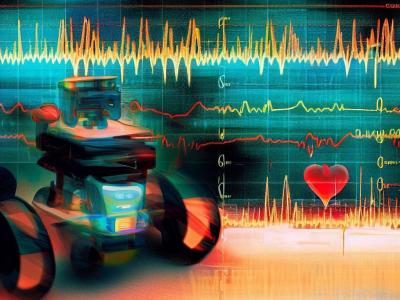Biophysiological Signals

This dataset protocol details the acquisition of a surface electromyography (sEMG) dataset from the Tibialis Anterior (TA) and Gastrocnemius Lateralis (GL) muscles of 20 healthy adults, with an equal distribution of 10 male and 10 female participants. The data was collected using the Delsys Trigno wireless EMG system during a 30-second walking session. Proper electrode placement on the specified muscles was ensured for accurate signal capture. Ethical considerations were addressed, with approval from the Institutional Review Board and informed consent from participants.
- Categories:
 180 Views
180 Views
Wearable and low power devices are vulnerable to side-channel attacks, which can retrieve private data (like sensitive data or the private key of a cryptographic algorithm) based on externally measured magnitudes, like power consumption. These attacks have a high dependence on the data being encrypted -- the more variable it is, the more information an attacker will have for performing it. This database contains ECG data measured with a wearable sensorized garment during different levels of activity.
- Categories:
 215 Views
215 ViewsDataset for validation of a new magnetic field-based wearable breathing sensor (MAG), which uses the movement of the chest wall as a surrogate measure of respiratory activity. Based on the principle of variation in magnetic field strength with the distance from the source, this system explores Hall effect sensing, paired with a permanent magnet, embedded in a chest strap.
- Categories:
 401 Views
401 Views
A new design and implementation of a control system for an anthropomorphic robotic hand has been developed for the Bioinformatics and Autonomous Learning Laboratory (BALL) at ESPOL. Myoelectric signals were acquired using a bioelectric data acquisition board (CYTON BOARD) with six out of the available eight channels. These signals had an amplitude of 200 [uV] and were sampled at a frequency of 250 [Hz].
- Categories:
 151 Views
151 ViewsThis is an auditory attention decoding dataset including EEG recordings of 21 subjects when they were instructed to attend to one of the two competing speakers at two different locations.
Unlike previous datasets (such as the KUL dataset), the locations of the two speakers are randomly drawn from fifteen alternatives.
All subjects have given formal written consent approved by the Nanjing University ethical committee before the experiment and received financial compensation upon completion.
- Categories:
 312 Views
312 Views
This study uses a dataset from 5 subjects, including 4 with Parkinson's Disease (PD) and 1 with Essential Tremor (ET). The data includes Inertial Measurement Unit (IMU) and surface electromyography (sEMG) signals. The dataset supports conclusions in the article "An OpenSim-based closed-loop biomechanical wrist model for pathological tremor simulation."
- Categories:
 285 Views
285 Views
8-channel monopolar sEMG signals were acquired using the device developed by our research group at a sampling rate of 1000 Hz. Medical gel electrodes (CH50B, Shanghai Hanjie Electronic Technology Co., LTD., Shanghai, China) were used for data collection. The position of the electrodes is shown in Fig. 2. The REF electrode was placed on the inner side of the upper big arm near the elbow and the RLD electrode was placed on the outer side of the right upper arm near the elbow. Eight monopolar electrodes were placed on the right forearm.
- Categories:
 88 Views
88 ViewsThe large number and scale of natural and man-made disasters have led to an urgent demand for technologies that enhance the safety and efficiency of search and rescue teams. Semi-autonomous rescue robots are beneficial, especially when searching inaccessible terrains, or dangerous environments, such as collapsed infrastructures. For search and rescue missions in degraded visual conditions or non-line of sight scenarios, radar-based approaches may contribute to acquire valuable, and otherwise unavailable information.
- Categories:
 1931 Views
1931 Views
This dataset is associated with the manuscript entitled "Data-efficient Human Walking Speed Intent Inference". The data represent the measurements taken from 15 able-bodied human subjects as the made speed changes while walking on a treadmill. Each subject is associated with a .mat file that contains 8 variables. Four variables are associated with the training dataset while four are associated with the experimental testing protocol.
- Categories:
 91 Views
91 Views


